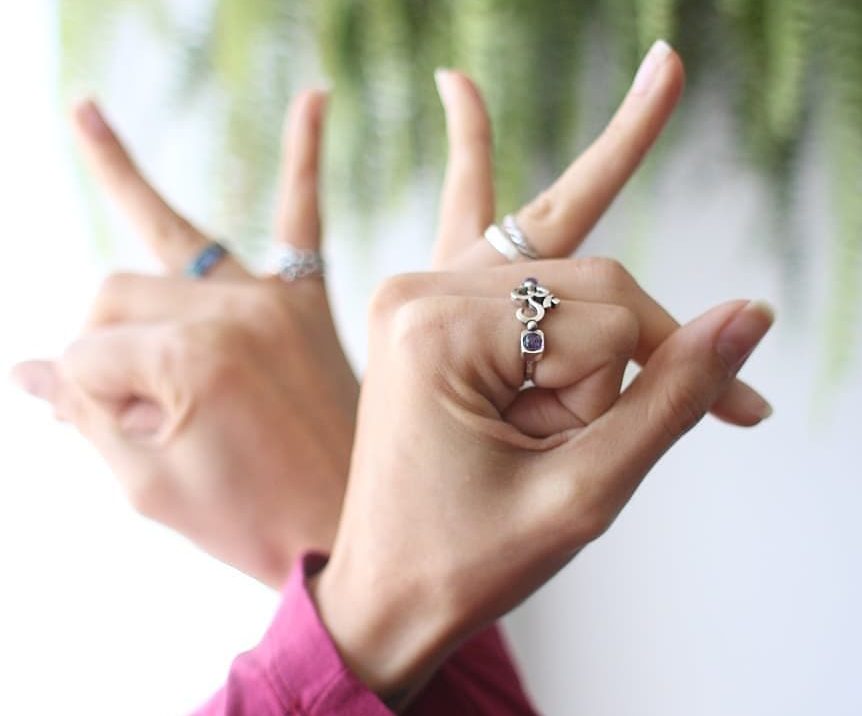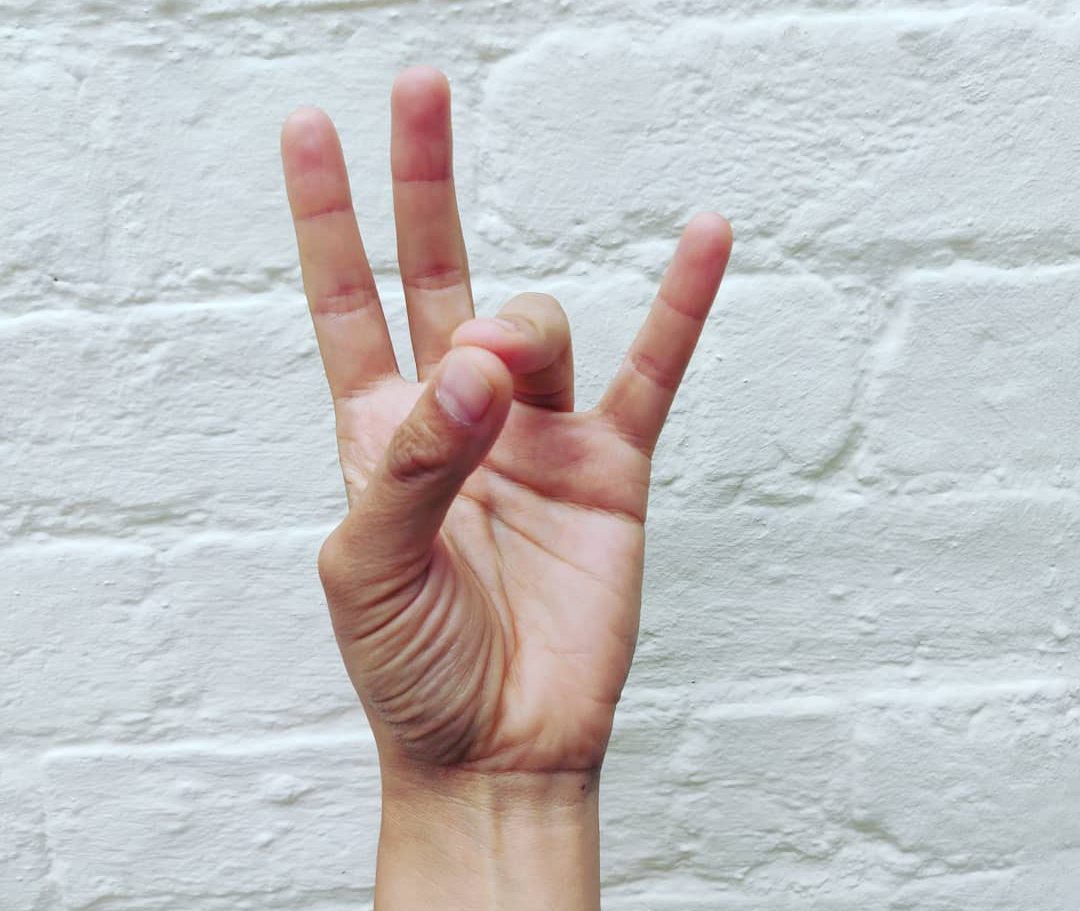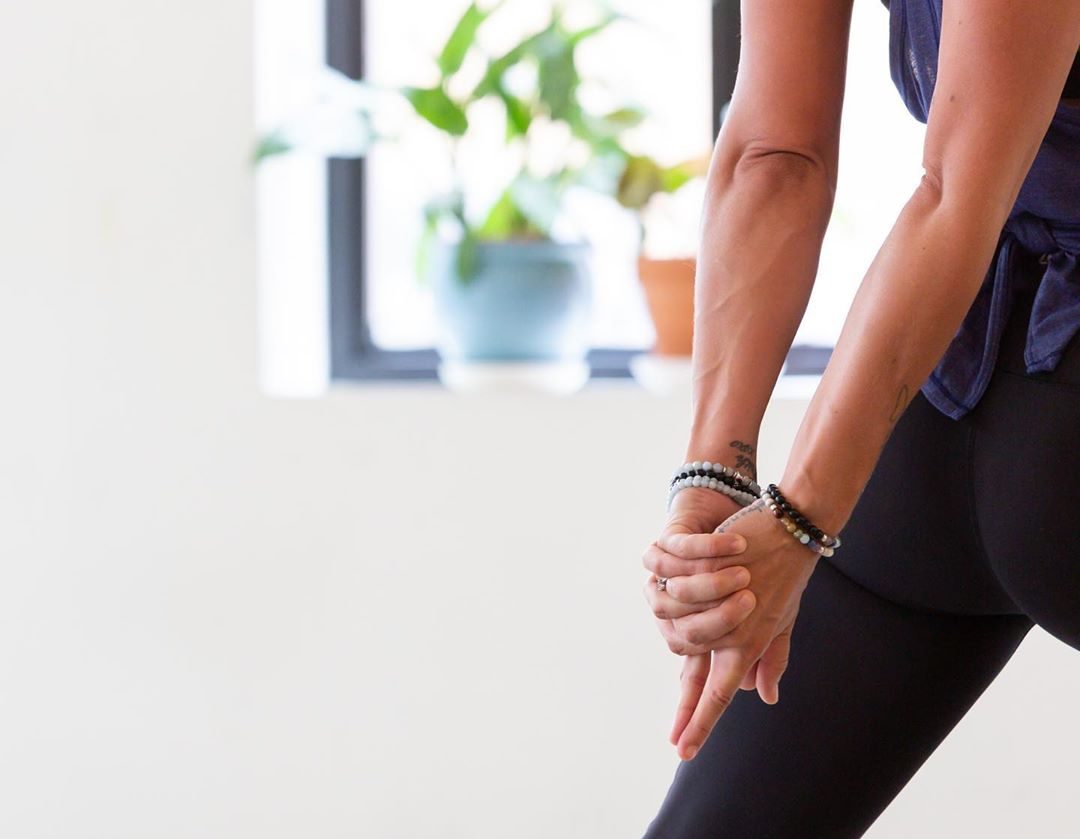Mudra in yoga
You have heard the term "mudra" but you don't know exactly what it means? What is a mudra? Why do we do mudras in yoga? What are the most common ones? I explain everything in this article.
Yoga often teaches us to become aware of our body. Usually, caught up in the whirlwind of daily life, we live a little disconnected from it... Yet, our body is a wonderful tool that allows us to fulfill our dreams and move forward in life. As an integral part of yoga, mudras are a simple way to enter a little more into our practice and reconnect with our body. But not only...
What is a Yoga Mudra?
The term mudra means "to seal" in the Sanskrit language. A mudra or hasta mudra is a posture performed with the hands and especially the fingers. These gestures seal an intention in body and mind. Just like joining hands to accompany a prayer, a mudra is a means of anchoring an idea, an objective in us.
In addition, we have many nerve endings within our fingers. Thus, in yoga, we think that these "finger postures" facilitate the transmission of our intentions towards our mind.
In yoga, mudras are sacred gestures. They help us to reach a psychological state (concentration...) as well as a better physical well-being. For example, some mudras can reinforce our fertility, our health or help us fight against our pains.
You can, at any time during your practice, opt for a mudra to accompany your postures or meditation. There are hundreds of them, all of which have a particular symbolism.

When to practice a mudra?
If you are new to yoga, you may have already practiced mudras without knowing their meaning and benefits. For example, it is common to do a mudra during meditation (especially Chin mudra). However, mudras can also be integrated into other parts of your yoga session.
Indeed, you can use them in particular:
- during relaxation. - during Yoga Nidra sessions. - in breathing exercises. - to accompany your standing and sitting postures.
Mudras of the hands: how were they discovered?
The various mudras are part of the ancestral knowledge of yoga, explored for millennia to channel vital energy (Prana).
Their origin goes back more than 5000 years, to the origin of yoga. It is said that at that time, people unconsciously sketched certain finger gestures during meditation. These gestures were transmitted little by little with the vocation to reach the state of mind in which the practitioners found themselves.
Moreover, in Tantra and Ayurveda, we think that each finger corresponds to an element (earth, water...). It is also evoked that each finger refers to a chakra or a certain concept. This is how we find the combinations of mudras.

How does a yoga mudra work?
As its name suggests, a mudra acts as a "seal". It prevents waste and loss of energy, thus increasing the energy field of those who practice it. Thus, the effects of a mudra can be felt directly by experienced practitioners. The fingers tingle, one feels heat or energy during the gesture. However, one can feel nothing and still benefit from their effects on the body and mind.
What mudras to begin in yoga?
Some mudras are very simple to use while others really require agility and experience. I am therefore proposing today some easy gestures to practice when starting yoga, as well as explanations of their benefits.

Anjali Mudra
This mudra consists of joining the two palms of the hands against each other, against the heart. This gesture is widely used in Asia to greet or thank. It is also associated with prayer. In yoga, it accompanies many standing or sitting postures, especially during the Sun Salutation.
Anjali Mudra allows us to reach a state of concentration conducive to practice, far from the agitation of our mind. It helps us to return to the heart, to our truth.
The term "Anjali" means "greeting". Thus, this gesture refers to the idea of greeting our inner divinity and that of others. This is why it is associated with the mantra "Namaste" at the end of the session.
Chin mudra
It consists of joining the thumb and index finger while leaving the other fingers taut or free. Initially, to practice it, it may be difficult to stretch the fingers. Don't panic, it will become easier with practice.
The term "Chin" means "gesture of consciousness". Indeed, Chin Mudra would allow one to refocus on one's connection to the world. It symbolizes individual and universal union. You have probably already taken this mudra during your meditations. However, it can also accompany sitting or standing postures in your practice of postural yoga.
Lotus mudra
It consists in taking a lotus shape with both hands. To do this, join your two thumbs and your two little fingers and open your hands and fingers towards the sky as if to represent a flower. From here, bring your hands to the center of the plexus, towards your heart.
Lotus mudra is associated with compassion and benevolence. It allows us to cleanse ourselves from the negative, from our shadowy parts to return to our divinity.
Yoni mudra
It aims to connect us to our feminine. It is also called "mudra of the feminine".
To practice it, you can join your forefingers and thumbs to form a triangle and put your hands flat on your lower abdomen. Yoni mudra is useful for boosting fertility but also for living through menstruation.
You can opt for this mudra during relaxations, Yoga Nidra sessions, or with the Goddess posture during the Moon Salutation.
Ganesh Mudra
The mudra of Ganesh refers to the Hindu deity with the head of an elephant. It is one of the most revered deities in India. It would help us to overcome the difficulties of our new projects, to go beyond the obstacles. His voluminous body is a sign of abundance and prosperity.
To practice it, place both hands close to the heart, fingers folded and hooked towards each other. The forearms are on a horizontal line and the elbows are pushed outwards. This mudra activates the heart chakra by creating space in the rib cage. Thus, it allows us to eliminate our fears and concerns.

Are you ready to add a mudra to your yoga sessions? Now you know what these gestures are and what they mean? Then don't hesitate to enrich your yoga practice with these finger and hand movements to attract more concentration, patience or prosperity?


